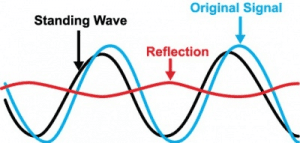One of the most commonly overlooked building blocks of a UAS communication system is RF filtering. Whether your system is for command and control or streaming sensor data such as live video, proper filtering can be the key element in achieving the communications range or data throughput desired. Unfortunately, it is often not realized that filtering is needed until the flight test phase of the development cycle – when daily costs are high and many eyes are on the project.
Why is RF filtering so important? Simply put, filters reduce the interference in the environment that affects the performance of the communication system, and reduce the interference caused by the communication system. The lack of RF filtering can affect the performance of the UAS in a number of ways:
– Communication range is reduced due to the desensitization of the radio receiver by RF signals in the environment. This interference may be caused by a multitude of sources, including other aircraft operating in the area, dense WiFi activity (especially for 2.4 GHz and 5.8 GHz systems), or other communication systems on the UAS platform.
– Interference produced by the communication system desensitizes other communication systems on the UAS platform, reducing the communication range of those systems.
– Interference produced by the communication system may interfere with the reception of GPS signals by the UAS platform, reducing the accuracy of the GPS tracking, or worst case, causing loss of the GPS tracking.
– Interference produced by the communication system desensitizes other communication systems on the UAS platform, reducing the communication range of those systems.
– Interference produced by the communication system may interfere with the reception of GPS signals by the UAS platform, reducing the accuracy of the GPS tracking, or worst case, causing loss of the GPS tracking.
RF filters reduce both the interference from other systems and the interference produced by the communication system itself by blocking RF energy outside the frequency range of operation. Think of it as trying to hold a conversation in a crowded room with several other conversations occurring at the same time. It is difficult to hear the person you are speaking to with all the noise. You have to raise your voice to be heard by the other person, which adds to the volume of noise in the room. If you take your conversation to another room away from the crowd, it is much easier hear the other person and there is no need to shout to be heard – this is the affect that filtering has on your communications system.

Figure 1. NuWaves provides custom filter solutions to improve UAS system performance
If your UAS communication system is not meeting the expected performance, consider adding filtering to your design. Filters are easy additions to the system: they can be small and lightweight, they do not require electrical power to function, and are generally low cost items. Filtering can make a significant difference in the performance of your UAS.
NuWaves Engineering has developed a wide variety of off-the-shelf RF filters to support mission-critical CONOPS in telemetry, ISR, and tactical communication systems applications. Frequency ranges are available from UHF through X-band. NuWaves also designs and fabricates custom cavity filters, with concept to delivery times in as little as two weeks. All NuFilter filter solutions are designed, built and tested in-house under NuWaves’ Quality Management System (QMS) certified to AS9100:2009 and ISO 9001-2008 standards, which ensures that each product arrives on-time and defect-free. Most models are in-stock. NuWaves also boasts a full suite of state-of-the-art design and simulation tools, test and measurement equipment, prototyping equipment and a full-scale production facility to provide custom solutions to your specifications. Contact NuWaves today to get the most out of your communication systems.


